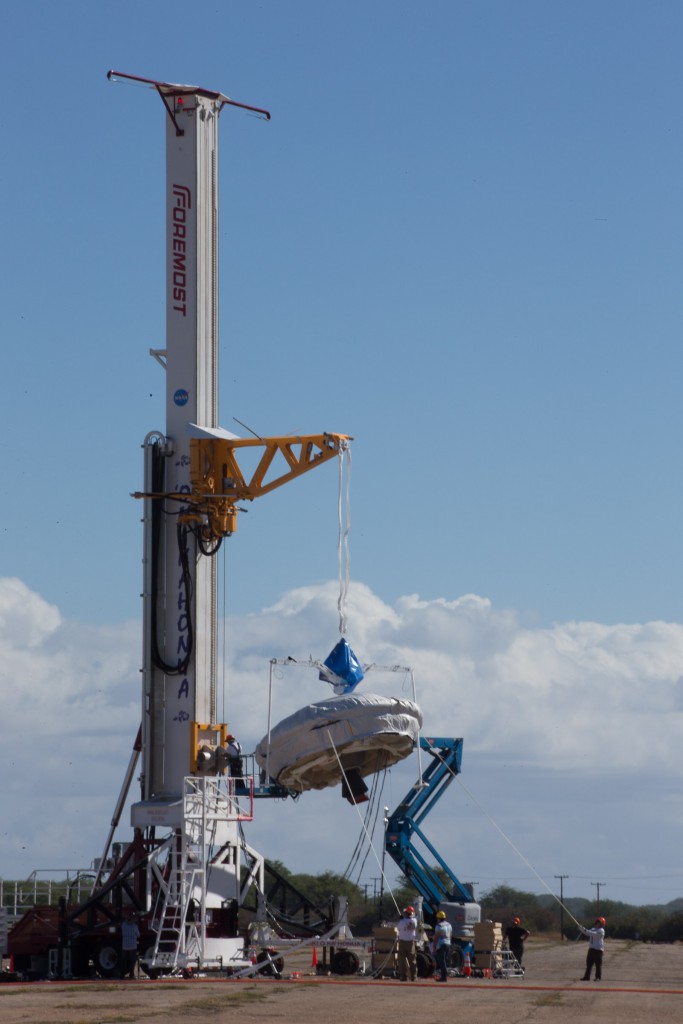Practice! Practice! Practice! That’s what it takes for the Low-Density Supersonic Decelerator (LDSD) team to be ready for the June 2 launch attempt of a rocket-powered, saucer-shaped test vehicle into near-space from the U.S. Navy’s Pacific Missile Range Facility (PMRF) on Kauai, Hawaii. Test success requires an intricate set of events, including use of a high-altitude balloon, rocket engines, an aeroshell and multiple supersonic decelerators.
On May 26, teams gathered at their respective stations to run through the launch day timeline to ensure a safe and successful launch. This exercise is one in a series of simulations planned to practice launch events and identify issues early. A full mission dress rehearsal will be held within the next several days to finalize test procedures before launch day.


The LDSD crosscutting technology demonstration mission will test breakthrough entry, descent and landing technologies that will enable large payloads to be landed safely on the surface of Mars. The technologies will not only enable landing of larger payloads on Mars, but also allow access to more of the planet’s surface by enabling landings at higher altitude sites and with improved accuracy.
